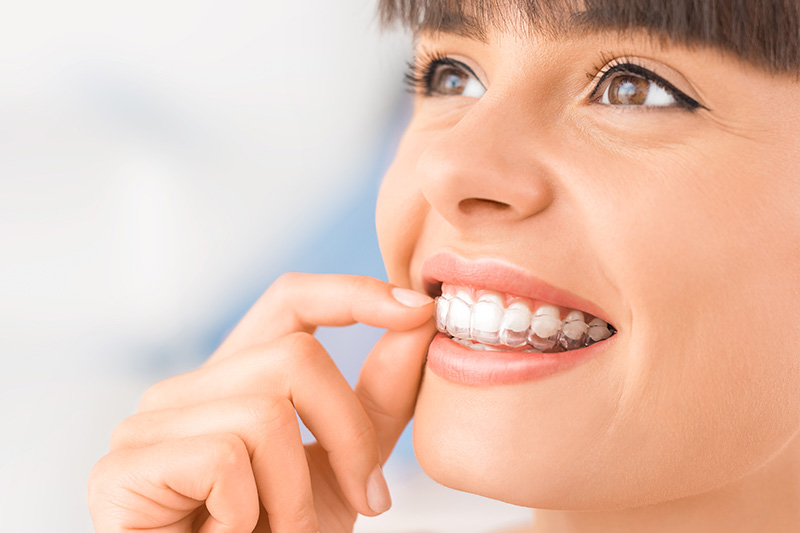Caring for Braces: Oral Hygiene Tips in San Juan Capistrano
Caring For Braces
At Sayed Orthodontics, we strive to provide you with the most beautiful and healthy smile possible. An extremely important part of this wonderful process is good oral hygiene, and you are the most valuable player in this area. We have listed a few tips and products that will help you maintain a healthy smile during active orthodontic treatment which you will benefit from long after your braces come off.
Braces make it more difficult to brush and floss your teeth… however they also make the task much more important to carry out each day. Why? because braces trap food very easily, and this results in plaque formation. If plaque is not carefully and consistently removed from your teeth and from around your braces, you run the risk of developing gum disease, dental decay, enamel scarring, and bad breath. Plaque is a mixture of bacteria and food particles. Bacteria feeds on sugars and produces acids. The acids irritate your gums, erode the enamel on your teeth, and cause bad breath.
It is important to remove the plaque thoroughly and often. Then, when your braces come off, the teeth underneath will be healthy, strong, and visually appealing. Here are some tips to help you…
DO I NEED TO SEE MY REGULAR DENTIST FOR CLEANINGS DURING ORTHO?
YES!!! You need to maintain visits with your dentist for tooth cleanings and exams during your braces. We recommend seeing your dentist every 3-4 months while you are undergoing orthodontic treatment
TOOTH BRUSHING INSTRUCTIONS
Use a soft-bristle toothbrush. The most important thing is to look for a brush that is soft and approved by the American Dental Association (ADA). After that the size of the brush, the shape of the handle, and all other variations are up to you.
What about an electric toothbrush? Though it is not necessary, if you have one, it is safe to use an electric toothbrush on your braces. Dr. Sayed recommends electric (rotary or sonic) toothbrushes as it has been observed that most patients who use electric brushes maintain better hygiene.
Brush at least three times a day for at least 3-4 minutes each time.
Brush after each meal to make sure there is no food trapped in or around braces. It is important to brush the braces and all of the surfaces of the teeth, that is, the inside and outside surfaces as well as the chewing surfaces. Pay special attention to the areas between your brackets and your gums. You should take at least three to four minutes each time you brush. It is best to use a timer to make sure you are brushing long enough.
FLOSSING INSTRUCTIONS
Floss at least once a day.
It is definitely more tricky flossing with braces, but special flossing products can help make it easier for you. These include floss threaders, super floss, and other products designed for patients with braces. We will take plenty of time on your first visit (and whenever needed) going over flossing techniques. If you’re not sure you’re doing it right, feel free to ask us during your next visit
TOOLS TO HELP YOU
Rubber-tipped and end-tuft or single-tuft brushes: These are special brushes that help you to clean tough to reach areas around and between your teeth. The end-tuft or single-tuft brushes look something like pipe cleaners.
Oral irrigators like a Water Pic: These instruments shoot small streams of water onto your teeth at high pressure to remove food particles. They can be used as an aid in your oral hygiene, but not in place of brushing and flossing.
If you have questions about how to use any oral hygiene product, even your toothbrush, call us or ask during your monthly visit.
EATING RIGHT
When in braces you must think twice about eating foods that could increase your risk of cavities and ugly decalcification spots. You should also avoid anything that might damage your braces or wires. Frequently, breaking your braces will add to the overall treatment time and could cause additional costs to incur.
Stay away from hard and sticky foods. Caramel, hard candy…you get the idea. These foods can damage your braces and cause your teeth to move the wrong way! They could also get stuck in the wires and brackets, providing sugar for cavity-causing bacteria to munch on. Cut down on all sugary foods! You can still have a limited amount of sweet foods and beverages once in a while, but remember that the more sugars you eat, the greater your risk of tooth decay or decalcification.
It is important to remember to always brush at least three times a day and floss daily. Also, visit your general dentist three times a year for cleanings and cavity checks during active orthodontic treatment, then back to twice a year after active treatment (or as your general dentist advises).
SEE YOUR GENERAL DENTIST REGULARLY WHILE YOU WEAR BRACES!
ORTHODONTIC DIET CHART
Foods that cannot be cleaned off the braces may lead to discoloration or tooth decay. Even though your braces and wires are metal, they are fragile and are usually damaged by eating the wrong foods, resulting in it taking longer to finish your treatment.
ABSOLUTELY NO…
- Gum (sugarless or otherwise)
- Sticky foods
- Caramels
- Caramel apples
- Toffee
- Licorice
- Gummy bears
- Now and Laters ®
- Starburst ®
- Sugar Daddies ®
- Sugar Babies ®
- Tootsie Rolls ®
- Hard foods
- Apples or carrots (unless cooked or cut into small pieces)
- Nuts
- Popcorn
- Hard candy
- Corn on the cob
- Bagels
- Pizza crust
- Jerky
- Hard pretzels
- Ice
- Doritos ®
EAT MUCH LESS…
- Candy
- Ice cream
- Cookies
- Cake
- Pie
- Foods with sugar
DRINK MUCH LESS…
- Soda pop
- Drinks with sugar


